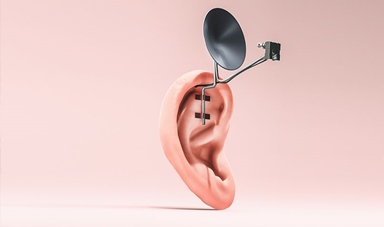Loading component...
At a glance
- The loss of customers or employees can often stem from a lack of listening.
- To listen well is to acknowledge the multiple situational, psychological and physical drivers at play.
- Active listening is not just about listening without speaking up, but asking the right questions and engaging with the answers.
Oscar Trimboli never set out to change the world, but after his fortuitous interjection during a meeting with fellow employees at Microsoft, his boss thought he just might anyway.
Trimboli, who was then marketing manager at Microsoft, found himself on edge at getting the “stay behind”signal at the end of a long – and at times unproductive – international discussion about budgets for the tech behemoth.
He had done one seemingly simple thing in that meeting 11 years ago: he asked his colleagues to pause and suspend all their judgements.
“I asked everyone, for just the next few moments, to operate in a space where every assumption they held could be false,” he says.
They did. Everyone started listening to each other, and the budgets were sorted out. His manager said the technique was revolutionary.
Six weeks on, when a similar method worked, this time when having to sell budgets to other staff, Trimboli got an inkling that he was on to something.
Now he’s an award-winning keynote speaker, author and consultant who specialises in active listening techniques.
“That’s all I do all day, spending time with money managers and getting them to understand that the cost of not listening is much bigger than they think. Whether it’s losing customers or losing employees – it usually comes down to a lack of listening.”
Honing your listening skills
There are myriad ways to improve your listening skills, but Trimboli says two things stand out when trying to help managers become better all-round communicators with staff who can feel they are not heard – or heard and brushed off.
First, because we speak at about 125 words a minute but think at about 900, he says the likelihood that the first thing a person says is what they mean is akin to a one in nine chance.
“Yet managers take those odds every day,” he says.
This leads to the second point: simply that it is important to seek further detail by saying “what else?”, or “tell me more”.
Trimboli feels Western culture in particular has a poor relationship with silence, often filling voids with words.
Instead, he suggests embracing the gap and allowing the speaker to gather their thoughts. It may help to get to the heart of the matter. “In doing that, managers can double their listening productivity immediately,” he says.
In his book The Art of Active Listening, author Josh Gibson suggests dismantling your bad habits before attempting to embrace new ones.
CPA Library resource:
Keep biases at bay
Much like Trimboli’s eureka moment when he won over senior managers at Microsoft, Gibson posits that real listeners will check their own biases (about the impending conversation or the speaker) at the door, and attempt to moderate influences such as their own mood and interest levels before conversing.
Remember the practicalities
Thereafter, it’s about the practicalities: a good space to speak and listen in, and eliminating the distractions of technology.
From there, sound communication skills can come to the fore.
Good habits include resisting the temptation to express agreement or disagreeing too early, having empathy, and ultimately drawing out the specifics of the conversation. Author Emilia Hardman goes a step further in her book Active Listening 101: How to Turn Down Your Volume to Turn Up Your Communication Skills, exploring many non-verbal cues of listening such as making eye contact, positive posture and movement, and using a collaborative office set-up for a meeting, as opposed to one that conveys a skewed power dynamic.
Listening vs engaging
While there’s a relative dearth of practical research on listening, University of Western Australia academic Donella Caspersz (with Ania Stasinska) has explored themes of learning to listen on a practical level in the paper Can we teach effective listening? An exploratory study.
Caspersz says active listening shouldn’t have to equate to passive acceptance, whether by a student or business leader.
Answering a question is one thing; engaging with it takes it to the next level.
“Different opinions can really foster creativity and innovation. If we aren’t able to engage in the fullness of a problem, that is going to have a big influence on this,” she says.
Similarly, Trimboli says a good listener doesn’t just let the speaker run roughshod or go unquestioned.
“Great listeners are more like editors than stenographers. Good listeners listen to try to make sense for themselves; great listeners help the speaker make sense for them.”
Five tips for active listening
- When in a meeting, turn off all your devices to avoid distractions.
- Drink a glass of water every half hour. A hydrated brain is a listening brain.
- Take visual notes/mnemonics. Graphics stick better than verbatim notes.
- Be comfortable with silence. Allow people to pause and continue.
- You can direct the conversation if needed. Listening doesn’t mean allowing people to repeat themselves ad nauseam
Recommended podcasts for listening tips
Listening in different situations: Oscar Trimboli offers his guidance.
The psychology of listening: Psychologist Mark Goulston’s 20-minute take on what listening entails.
Listening as a leadership skill: Toronto-based management coach Mary Legakis Engel describes the connection between good listening and leadership.

